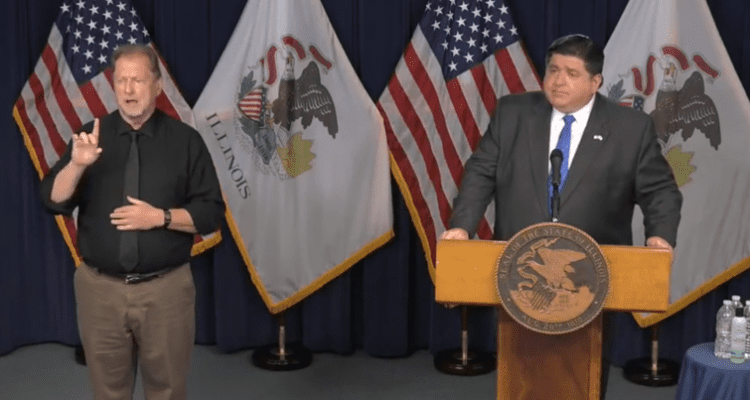New COVID Regions for Illinois
In a Wednesday afternoon press conference, Governor JB Pritzker announced that Illinois will now be broken into 11 Emergency Medical Services Regions to measure COVID-19 rates going forward.
The state had been split into four regions during the original Restore Illinois Plan. Dupage and Will Counties were in the Northeast region along with Chicago and all of Cook County in the previous regional plan.
The city of Chicago will be its own region, as will Cook County. DuPage County is in the West Suburban region with Kane County, while Will County is in the South Suburban region along with Kankakee County.
The full list of newly assigned regions are:
- NORTH: Boone, Carroll, DeKalb, Jo Daviess, Lee, Ogle, Stephenson, Whiteside, Winnebago
- NORTH-CENTRAL: Bureau, Fulton, Grundy, Henderson, Henry, Kendall, Knox, La Salle, Livingston, Marshall, McDonough, McLean, Mercer, Peoria, Putnam, Rock Island, Stark, Tazewell, Warren, Woodford
- WEST-CENTRAL: Adams, Brown, Calhoun, Cass, Christian, Greene, Hancock, Jersey, Logan, Macoupin, Mason, Mason, Menard, Montgomery, Morgan, Pike, Sangamon, Schuyler, Scott
- METRO EAST: Bond, Clinton, Madison, Monroe, Randolph, St. Clair, Washington
- SOUTHERN: Alexander, Edwards, Franklin, Gallatin, Hamilton, Hardin, Jackson, Jefferson, Johnson, Marion, Massac, Perry, Pope, Pulaski, Saline, Union, Wabash, Wayne, White, Williamson
- EAST-CENTRAL: Champaign, Clark, Clay, Coles, Crawford, Cumberland, De Witt, Douglas, Edgar, Effingham, Fayette, Ford, Iroquois, Jasper, Lawrence, Macon, Moultrie, Piatt, Richland, Shelby, Vermillion
- SOUTH SUBURBAN: Kankakee, Will
- WEST SUBURBAN: DuPage, Kane
- NORTH SUBURBAN: Lake, McHenry
- SUBURBAN COOK: Suburban Cook
- CHICAGO: City of Chicago
Illinois with Lowest Positivity Rate in Region
Currently, the Illinois Department of Public Health is reporting a total of 156,693 cases, including 7,226 deaths, in 102 counties in Illinois. The preliminary seven-day statewide positivity for cases as a percent of total test from July 8–July 14 is 3.1%.
“Illinois now has the lowest infection rates among all our neighboring states and one of the lowest positivity rates in the country and it’s because of the individual actions of millions of our residents,” said Governor Pritzker. “Opening up our economy does not have to come with a spike in cases. Other countries have done it successfully while reducing cases and infection rates. But that requires vigilance on the part of all of us. It’s imperative that individuals, families, workers and businesses follow the recommendations doctors have given about vital mitigations and that we act quickly if we see any outbreaks and upticks, signs that could lead to a surge of coronavirus infections.”
Numbers to Watch
Governor Pritzker and the IDPH announced what data trends could result in future shutdowns or phase changes.
- Sustained increase in 7-day rolling average (7 out of 10 days) in the positivity rate and one of the following severity indicators:
- Sustained 7-day increase in hospital admissions for a COVID-19 like illness
- Reduction in hospital capacity threatening surge capabilities (ICU capacity or medical/surgical beds < 20%)
- OR three consecutive days averaging ≥ 8% positivity rate
Other Items
Governor Pritzker also strongly encouraged Illinois School Districts to follow the Illinois guidelines for re-opening schools, saying that masks, social distancing and lower class sizes are necessary for schools to implement in person instruction.
Districts 203 and 204 announced their plans for the 2020-21 school year earlier this week.
The governor also gave a renewed call to action in regards to wearing masks and social distancing to keep the positivity rates in Illinois as low as possible. He encouraged Illinois residents to be vigilant and pointed out that positivity rates in the 10-19 and 2o-29 age groups are now higher than ever before.
The IDPH will also be monitoring bars and youth sports gatherings due to potential increases in positivity rates that may be tied to these activities.








